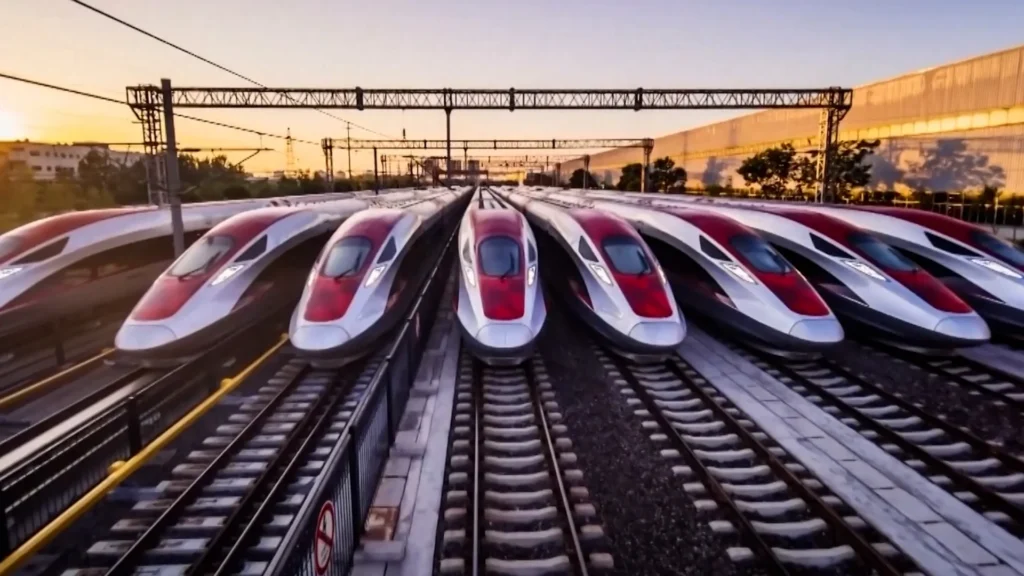
China relies on artificial intelligence to manage the world’s largest high-speed rail network
- entspos
China is leveraging artificial intelligence to manage its extensive 45,000km high-speed rail network, achieving notable milestones, as per involved engineers. An AI system in Beijing processes real-time data countrywide, promptly alerting maintenance teams with 95% accuracy within 40 minutes, facilitating swift reinspection and repair efforts.
Last year, no operational high-speed railway lines in China warranted speed reductions due to major track irregularities, while minor track faults decreased by 80%. With the application of AI technology, rail movement amplitude induced by strong winds, even on massive valley-spanning bridges, has reduced.
This machine intelligence predicts and warns of potential issues before they occur, ensuring precise and timely maintenance, thereby enhancing the infrastructure’s condition. The substantial data generated by embedded sensors in high-speed rail infrastructure is compelling China to adopt new technologies such as big data and artificial intelligence, allowing for more precise assessments and evaluations of infrastructure service status.
Chinese railway scientists and engineers have tackled challenges in risk perception, equipment evaluation, and precise trend predictions, providing scientific support for proactive safety prevention and precise infrastructure maintenance for high-speed railways. Despite initial concerns regarding maintenance burdens, China’s high-speed rail network continues its expansion, posing engineering and technological challenges.
AI emerges as a solution recognized over a decade ago, with European countries also exploring similar approaches albeit on smaller railway networks compared to China’s. To train the AI system, Chinese railway scientists and engineers have collected and organized nearly 200 terabytes of raw data, including various sources like dynamic waveform values, train body movements, and meteorological records.
AI’s strength lies in its diverse data analysis capabilities, allowing for more precise fault identification and prediction, significantly improving new data analysis efficiency by 85%. The China State Railway Group implemented a data management protocol in 2022 to ensure system control by imposing numerous restrictions on data storage, usage, and other privileges.














